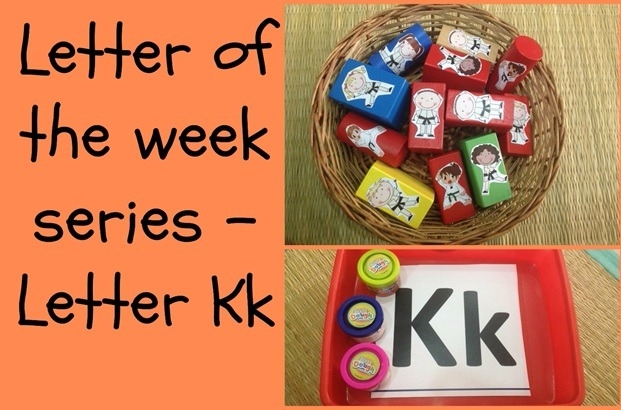
Fun ways to learn the Alphabet: K is for Kitchen play!
9 Jun 2016 | 4 min Read
Amruta Ramsubramaniam
Author | 37 Articles
As we move ahead in our letter of the week series installment, I can’t help notice the difference it has made in our life! Learning has to be joyous, they say. It has to be addictive! It has to be more than mere numbers or letters. My son eagerly awaits every week for a new letter to be unfolded. We have loads of conversations about objects that start with a particular letter sound. He loves to dramatically sound out letters phonetically. For us, letter of the week series is not about letters. Yes, it sounds totally contradictory! But for us it is a mix of our favorite things – a little bit of science, a little bit of practical life, a little bit of art, a little bit of storytelling…
This week, I’m excited to share with all of you some fun ways of practicing letter K!
Here is an overview of our shelf, as you can see from the picture below, we love to start off our activities by tracing the sandpaper letter. At this point, I also like to show my son the uppercase and lowercase letter form.
We also like to review our “Letter of the week’’ poster along with letter of the week folder which contains picture cards starting from letter K.
Next up is some practical life work – K is for kidney beans. For this, I put together a dry pouring work.
K is also for key. Here we practiced using a key and a lock. Such a simple work, but can truly keep a little child engaged for some time!
We also tried our hands at making letter K with play dough. I always help my child for this work, as he is still young to do this on his own.
After that K is for kitchen tools – so I put together some of his favorite tools in a tray. He loves to help me in cooking, but this was fun as well – getting real kitchen tools on the shelf!
K is also for kitten! I created a fun cutting work of different shapes – inside each shape was a cute little kitten!
K is also for karate! For this we tried doing some karate moves and kickboxing, which actually ended up in a silly dance session. Lol! I also created some karate blocks (I glued the karate children pictures on the wooden blocks). This was a fun idea for block and pretend play!
K is also for kimono and since our mind is still fresh from our Japan unit that we did last week, I set up a fun kimono matching work for my son. But he didn’t seem interested in this at all. So I used those cards and set up a book making work for my son. This was an instant hit! He loved to punch holes in the paper and attach the ring binders.
Talking about keys, we also ended up doing some fun painting work with the help of keys. My son dipped keys in paints instead of brushes. This was my son’s most favorite work on the shelf 🙂
One more activity on keys was a pretend play of cars with their keys – my son loves to mimic how an actual car key sounds, so I thought of including this work on his shelf!
K is also for King, for which I set up a fun cutting and pasting work of various elements related to a king – like throne, soldier, palace etc.
K is also for kidney –we have a book on internal body organs. So we read a page which spoke about kidney and its bodily functions. I also included a miniature of kidney from our safari toob set!
And lastly K is for keyboard, so we had some fun time randomly playing it and humming some songs along!
Catch the entire video on my Youtube channel to see these activities in action:
If you have missed out on the previous letters, please find them here: Letter A, Letter B, Letter C, Letter D, Letter E, Letter F, Letter G, Letter H, Letter I, Letter J
I would love to hear how you are getting along with this series, so feel free to leave back a comment!
A


Suggestions offered by doctors on BabyChakra are of advisory nature i.e., for educational and informational purposes only. Content posted on, created for, or compiled by BabyChakra is not intended or designed to replace your doctor's independent judgment about any symptom, condition, or the appropriateness or risks of a procedure or treatment for a given person.
